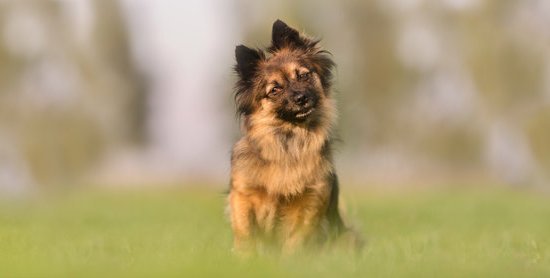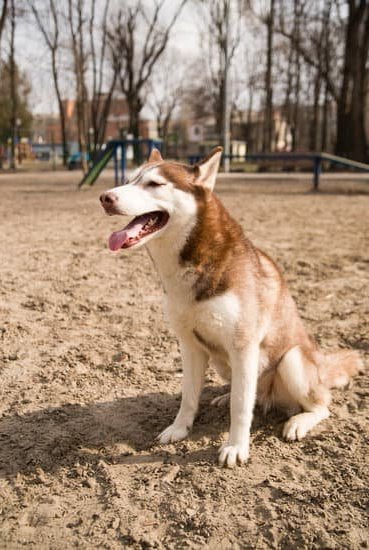Are you interested in learning how to train a police tracking dog? Police tracking dogs play a crucial role in law enforcement operations, assisting officers in locating missing persons, apprehending suspects, and detecting illegal substances. In this article, we will delve into the various aspects of training these highly skilled K9 officers to perform their essential duties effectively.
The role of a police tracking dog is multifaceted, encompassing search and rescue missions, criminal apprehension, and evidence recovery. These highly trained canines possess an acute sense of smell and an unwavering determination to track down individuals or items of interest. Understanding the intricacies of their role is paramount in successfully training these remarkable animals.
Training a police tracking dog is a complex process that requires dedication, patience, and expertise. In this comprehensive guide, we will explore the importance of proper training methods as well as the impact of a well-trained police tracking dog on law enforcement operations.
Additionally, we will discuss the selection of the right breed for police tracking, basic obedience training techniques, scent training methods, advanced tracking skills, and the utilization of technology in their training. Whether you are considering becoming a police dog handler or simply have an interest in understanding the capabilities of these incredible animals, this article aims to provide valuable insights into the world of police dog training.
The Importance of Training a Police Tracking Dog
One of the key reasons for training a police tracking dog is to ensure reliability and accuracy in their work. Through rigorous training, these dogs learn to follow scent trails with precision, distinguish between different smells, and maintain focus even in distracting environments. This level of training not only enhances the effectiveness of the dog but also increases safety for both law enforcement officers and civilians.
In addition to enhancing operational effectiveness, well-trained police tracking dogs also contribute to public trust and confidence in law enforcement agencies. When these animals are able to successfully track down suspects or locate missing persons, it demonstrates the capabilities of law enforcement in a tangible way. This can lead to an increased sense of security within communities and bolster support for law enforcement efforts.
| Role | Importance |
|---|---|
| Aid in pursuing and apprehending suspects | Enhances operational effectiveness |
| Locating missing persons | Contributes to public trust in law enforcement |
| Detecting illegal substances | Increases safety for officers and civilians |
Selecting the Right Breed for Police Tracking
When it comes to selecting the right breed for police tracking, there are several factors that law enforcement agencies need to consider. The following are some key points to keep in mind when choosing a breed for police tracking:
- Temperament: It’s crucial for police tracking dogs to have a stable temperament, as they will often be working in high-stress situations. Breeds known for their calm and steady disposition, such as German Shepherds and Belgian Malinois, are often preferred for this role.
- Size and Strength: The ideal police tracking dog should have the size and strength necessary to apprehend a suspect if needed. Larger breeds like Bloodhounds and Rottweilers are often chosen for their physical capabilities.
- Trainability: The breed selected for police tracking should be highly trainable, with a strong work ethic and the ability to learn complex commands quickly. Breeds like Labrador Retrievers and Dutch Shepherds are known for their trainability and intelligence.
It’s important to note that while certain breeds may be more commonly used in police tracking, individual temperament and drive can vary widely within a breed. Ultimately, the most important factor is finding a dog with the right combination of traits to excel in the demanding role of a police tracker.
Basic Obedience Training for Police Tracking Dogs
Starting With the Right Foundation
Before a police tracking dog can begin learning advanced tracking skills, it is essential to ensure they have a solid foundation in basic obedience. This includes mastering commands such as sit, stay, heel, and come. These fundamental commands are crucial for maintaining control over the dog in various situations during a tracking operation.
Building Trust and Communication
During basic obedience training, the handler focuses on building a strong bond of trust and communication with the dog. Positive reinforcement techniques are used to ensure that the dog responds promptly and accurately to commands. Consistency is key in this stage of training, as the dog needs to understand that certain behaviors are expected at all times.
Real-Life Scenario Training
In addition to mastering commands in controlled environments, basic obedience training should also include exposure to real-life scenarios that mimic the challenges of police tracking operations. For example, practicing obedience commands in busy urban environments or amidst distractions helps prepare the dog for the unpredictable nature of law enforcement work.
By establishing a strong foundation in basic obedience training, police tracking dogs are better equipped to handle the rigors of advanced tracking skills. This early training not only sets the stage for success in scent detection and pursuit but also contributes to overall effectiveness and safety in law enforcement operations.
Scent Training Techniques for Police Tracking Dogs
Understanding the Importance of Scent Training
Scent training is a crucial aspect of training police tracking dogs. These dogs are trained to follow and locate specific scents, such as those of a missing person or a suspect. Scent work is essential for a tracking dog to effectively perform their duties in law enforcement operations. This type of training enhances the dog’s natural abilities to track scents and increases their success rate in finding and apprehending suspects or locating missing individuals.
Setting Up Scent Detection Training
To start scent detection training, handlers should begin with basic scent discrimination exercises using materials such as cotton swabs or gauze pads infused with specific scents. Dogs are then trained to differentiate between different scents and match them with corresponding items. As the dog progresses, they are gradually introduced to more complex searches in various environments, including urban areas, rural settings, and buildings.
Implementing Real-Life Scenarios Into Training
It is important for police tracking dogs to be exposed to real-life scenarios during scent training. This includes incorporating elements such as varying weather conditions, different terrains, and distractions that simulate actual search and rescue or criminal pursuit situations. By exposing the dogs to these realistic scenarios during training, they are better prepared to perform at an optimal level when deployed in the field with law enforcement personnel.
Scent training techniques for police tracking dogs are an integral part of their overall training regimen. By mastering these techniques, handlers can ensure that their canine partners are proficient in detecting and tracking scents accurately, thereby increasing their effectiveness in supporting law enforcement operations.
Advanced Tracking Skills for a Police Tracking Dog
Once a police tracking dog has mastered the basic obedience and scent training, it is important to move on to more advanced tracking skills. These skills are crucial in assisting law enforcement in apprehending suspects and finding missing persons. Here are some advanced tracking skills that can be taught to police tracking dogs:
1. Variable Surface Tracking: This type of training exposes the dog to different terrain and surfaces, such as concrete, asphalt, grass, dirt, and gravel. This helps the dog become accustomed to various textures and scents it may encounter during real-life search and rescue missions.
2. Urban Tracking: Urban tracking involves teaching the dog to track scents in busy urban environments such as city streets, alleys, and parking lots. It requires the dog to focus on specific scents amidst numerous distractions that are common in urban settings.
3. Cross-Tracking: Cross-tracking training involves introducing multiple scents to the dog during a search, requiring the dog to distinguish between different scents and stay focused on the correct one.
It is important for police tracking dogs to receive ongoing training in these advanced skills to ensure their effectiveness in real-life scenarios. Handlers must work with experienced trainers who can provide guidance on developing these advanced capabilities in police tracking dogs.
By mastering these advanced tracking skills, police tracking dogs can significantly enhance their ability to aid law enforcement agencies in conducting successful investigations and search operations.
Utilizing Technology in Police Tracking Dog Training
Technology has become an important tool in training police tracking dogs. One of the most common technologies used is the GPS tracking collar, which allows handlers to monitor their dog’s location in real-time. This can be incredibly useful during training exercises, as it provides valuable feedback on the dog’s behavior and performance. Additionally, drones are being used to simulate real-life scenarios for police tracking dogs, providing a more dynamic and challenging training environment.
Another technology that has been adopted for police tracking dog training is virtual reality (VR). VR simulations can replicate various terrains and scenarios, allowing dogs to experience different environments without leaving the training facility.
This helps them become accustomed to a wide range of situations they may encounter while on duty. Furthermore, motion-sensing technology is also being used to track and analyze the movement patterns of police tracking dogs during training sessions, identifying areas for improvement and ensuring that they are performing at their best.
The incorporation of technology in police tracking dog training not only enhances the effectiveness of the training process but also prepares these highly skilled animals for the challenges they will face when deployed in real-life law enforcement operations.
| Technology | Application |
|---|---|
| GPS Tracking Collar | Real-time monitoring of dog’s location and behavior |
| Drones | Simulate real-life scenarios for dynamic training environment |
| Virtual Reality (VR) | Replicates various terrains and scenarios for diverse experience |
| Motion-sensing Technology | Analyze movement patterns for performance improvement |
The Continuing Education of a Police Tracking Dog Handler
Once a police tracking dog has been trained and is actively working in law enforcement, it is important to recognize the need for ongoing education and training for the handler. The skills of a tracking dog handler are just as important as those of the dog itself. Continuing education ensures that both the handler and the dog are performing at their best and are up-to-date with the latest techniques and practices in tracking.
Continuing education for a police tracking dog handler can include courses in advanced scent detection, understanding animal behavior, first aid for dogs, and legal updates on working with police dogs. These courses not only enhance the knowledge of the handler but also provide them with new tools and techniques to improve their abilities when working with their canine partner.
In addition to formal education, regular practice sessions are crucial for maintaining high proficiency levels. Police tracking dog handlers should regularly participate in simulated search exercises, where they can practice communication and coordination with their dogs. This ongoing training helps keep both the handler and the dog sharp and prepared for any real-life situations they may encounter while on duty.
The Impact of a Well-Trained Police Tracking Dog on Law Enforcement Operations
In conclusion, the impact of a well-trained police tracking dog on law enforcement operations cannot be overstated. These highly skilled K-9 units play a crucial role in locating missing persons, apprehending suspects, and detecting illegal substances. Their training and abilities can make the difference in solving crimes and saving lives.
The successful training of a police tracking dog relies heavily on the dedication of their handler and the use of effective techniques, such as scent training and advanced tracking skills. It is also essential to select the right breed for police tracking based on their natural instincts and abilities. With proper training, these dogs become invaluable assets to law enforcement agencies.
Furthermore, the utilization of technology in police tracking dog training has enhanced their effectiveness, allowing them to cover larger areas and locate targets more efficiently. The continuing education of both the dog and handler ensures that they are always prepared to face new challenges in law enforcement operations. In this way, a well-trained police tracking dog contributes significantly to maintaining public safety and upholding the rule of law.
Frequently Asked Questions
How Are Police Dogs Trained to Track?
Police dogs are trained to track by using their keen sense of smell and natural hunting instincts. First, they are exposed to various scents and taught to differentiate between them.
Then, they are trained to follow a specific scent trail over different types of terrain and in various environments. This training involves rewards for successfully tracking a scent, as well as discipline for not following the correct trail.
How Do You Train a Track Dog?
Training a track dog involves building on the dog’s natural abilities and honing their skills through consistent practice and reinforcement. Initially, the dog is introduced to tracking scents and taught basic commands for following a scent trail.
As the training progresses, the difficulty of the trails is increased, and the dog is encouraged to use its own judgment when tracking. It’s important for handlers to maintain patience and provide consistent training techniques.
How Do I Train My Dog to Be a Police Dog?
Training your own dog to be a police dog requires commitment, time, and resources. It involves teaching the dog basic obedience commands as well as getting them accustomed to various environments and situations.
Introducing scent work early on can be beneficial if you’d like your dog to have a strong tracking ability. However, it’s crucial to remember that not all dogs are suitable for police work and consulting with professional trainers or organizations is recommended before pursuing this kind of specialized training for your pet.

Welcome to the blog! I am a professional dog trainer and have been working with dogs for many years. In this blog, I will be discussing various topics related to dog training, including tips, tricks, and advice. I hope you find this information helpful and informative. Thanks for reading!





